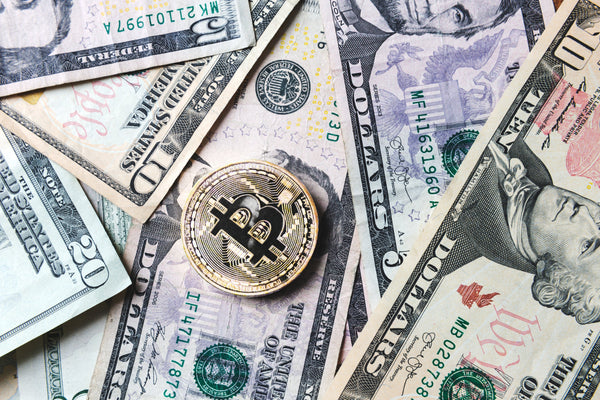In the world of cryptocurrency, "self-custody" means taking full control of your digital assets. Rather than relying on an exchange or a third-party service to hold your Bitcoin, self-custody puts the responsibility entirely on you. This method gives you greater security and privacy but also requires careful attention to best practices to ensure that your Bitcoin is both safe and accessible when needed.
In this guide, we'll walk you through exactly how to self-custody your Bitcoin wallet and seed phrase, ensuring maximum protection against loss, theft, and disaster.
Step 1: Choose the Right Wallet
Before you can self-custody your Bitcoin, you’ll need to select a wallet that offers self-custody options. There are three main types of wallets that you can consider:
Hardware Wallet
A hardware wallet is a physical device that stores your private keys offline, protecting them from online threats like hacking. Popular hardware wallets include Ledger, Trezor, and Coldcard.
Best Practices:
- Purchase your hardware wallet directly from the manufacturer to avoid tampering.
- Never use a pre-owned or second-hand wallet.
Paper Wallet
A paper wallet involves printing your public and private keys on paper, ensuring that your Bitcoin is kept entirely offline. While this is a low-cost option, it is more susceptible to physical risks such as damage or loss.
Best Practices:
- Use a reputable generator (ideally offline) to create the keys.
- Store the paper in a fireproof, waterproof container to avoid degradation.
Software Wallet
Software wallets are applications installed on your desktop or smartphone. While more convenient, they are also more vulnerable to online threats.
Best Practices:
- Use software wallets only for smaller amounts of Bitcoin or day-to-day transactions.
- Always keep your software wallet updated and install it on a secure device.
For maximum security, we recommend using a hardware wallet in combination with securely storing your seed phrase.
Step 2: Generate and Back Up Your Seed Phrase
When setting up your wallet, you’ll be given a seed phrase (typically 12 to 24 words). This phrase is the master key to your Bitcoin wallet. If your hardware or software wallet is lost or damaged, your seed phrase allows you to recover your funds.
Backing Up Your Seed Phrase
Your seed phrase should never be stored digitally (such as on a computer, phone, or cloud storage) because these can be hacked or accessed by third parties. Instead, opt for one of the following methods:
-
Write It Down
Write your seed phrase on a piece of paper using permanent ink. Ensure that it’s legible and store it in a safe, fireproof, and waterproof location. -
Engrave It on a Metal Plate
Metal seed plates are becoming popular because they offer excellent resistance to fire, water, and physical damage. Companies like Billfodl and CryptoSteel offer engraved metal plates designed specifically for seed phrase storage. -
Multiple Copies
For added security, consider making multiple copies of your seed phrase and storing them in different secure locations. Avoid storing them in easily guessable locations like under your mattress or in an obvious home safe.
Step 3: Protect Your Wallet and Seed Phrase from Physical Threats
Now that you have your wallet and seed phrase, the next step is to ensure their physical security. Here’s how you can protect them:
Use a Fireproof, Waterproof Safe
Whether storing your hardware wallet or paper backup, a fireproof and waterproof safe is an essential investment. Look for safes that can withstand high temperatures (up to 1700°F) and are airtight to protect against water damage.
Consider Burying Your Seed Phrase or Wallet Underground
For long-term storage, burying your seed phrase or hardware wallet in a secure, undisclosed location is an effective method for safeguarding against theft, fire, and water damage. Here’s how to do it properly:
- Use an Underground Safe: Choose a high-quality, waterproof, and corrosion-resistant container. The DirtyMan Safe is specifically designed for underground storage can be purchased.
- Select the Right Location: Pick a location that is private and away from environmental risks such as construction or flooding. Avoid high-traffic areas and make sure the burial spot is discreet but memorable to you.
- Mark the Spot Subtly: Use natural markers like a specific tree, rock, or coordinate system that only you would recognize.
- Bury Deep Enough: Make sure to bury the container at least 2-3 feet underground to protect it from environmental elements and casual detection.
Separate Your Seed Phrase and Wallet
For maximum security, do not store your wallet and seed phrase in the same location. For instance, you can keep the hardware wallet in a home safe and the seed phrase in an entirely separate location (such as buried underground).
Step 4: Set Up a Redundancy Plan
No security method is foolproof, so setting up redundancy is critical. Here's how to ensure that your Bitcoin can be recovered even if things go wrong:
-
Backup Locations
Store backups of your seed phrase in more than one location (for example, one at home, one in a bank vault, and one buried underground). -
Shamir’s Secret Sharing
Some wallets, like Trezor, offer Shamir’s Secret Sharing, which splits your seed phrase into multiple parts. You can distribute these parts across different locations, and only a portion of them are needed to reconstruct the original phrase. This provides added protection against a single point of failure. -
Test Your Recovery Plan
Before storing your wallet or seed phrase, test the recovery process by wiping the wallet and using the seed phrase to restore it. This ensures that your backup process works and that you can recover your Bitcoin when needed.
Step 5: Monitor and Update Your Setup Over Time
While the process of self-custody may seem like a “set it and forget it” approach, it's important to periodically review your setup and make adjustments if needed.
-
Regularly Inspect Your Storage Locations
Periodically check the condition of your physical backups and wallet. If you’ve buried your wallet or seed phrase underground, ensure that the environment hasn’t shifted and that the container remains in good condition. -
Update Your Wallet Firmware
If you’re using a hardware wallet, always ensure it has the latest firmware to protect against new threats or vulnerabilities. -
Change Your Backup Strategy as Needed
If you move or if your security concerns change, be prepared to relocate or update your seed phrase storage.
Conclusion: The Importance of Self-Custody
Self-custody of Bitcoin provides ultimate control and security over your funds, but it comes with the responsibility of proper setup and maintenance. By choosing the right wallet, securely backing up your seed phrase, and using advanced storage methods like burying it underground, you can ensure that your Bitcoin remains safe from physical and digital threats.
Always follow best practices, review your setup over time, and create redundancy to protect against the unexpected. In the end, the effort put into securing your Bitcoin will give you peace of mind, knowing that your assets are fully protected.



